How to Get Faster on the Bike
For those of us who are triathletes (or want to be triathletes), there is no way to get around one simple truth: At least one of the 3 sports is going to be harder for us and will come less naturally to us than the others. Translation: Most of us (who are runners at heart) are going to suck at swimming or biking. For me, biking has been my nemesis. This year, I’ve made it my mission to learn how to get faster on the bike.
When I first began training for longer distance triathlons in 2012, I didn’t understand the science of gear shifting, how to work the uphills and downhills to my advantage, how to be aerodynamic. And most of all, I couldn’t concentrate on any of it because my crotch just hurt way too much! Riding a bike (particularly with the wrong seat and wrong fitting) for multiple hours can paralyze your lady parts.
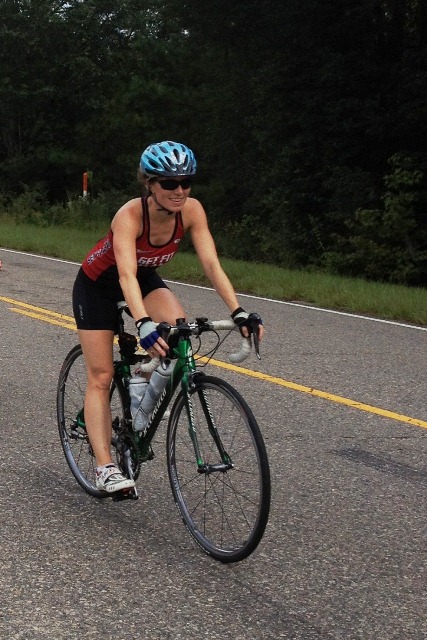
So what did I do? I talked myself into believing I wasn’t good at the bike. I did the bare minimum when it came to training. I didn’t take enough proactive steps to change that.
Until this year.
2013 was my year of embracing the bike. I became one with the bike. (Yes, it was as cheesy as it sounds.) I spent the most time doing the sport I was least good at. I biked 3 to 4 times per week. Logged a lot of miles on the trainer. Talked to experienced triathletes and cyclists about how to get faster on the bike. Learned more about aerodynamics. Rode in challenging conditions that would simulate my race (e.g. flat boring trails with little change in scenery or terrain and wind). Invested in bike upgrades to make me more aerodynamic. Used race wheels the three weeks leading up to my race and on race day. And it worked.
At the Beach2Battleship Half Iron Triathlon this year, I finished the bike leg (56 miles) more than 14 minutes faster than I finished the Augusta 70.3 course in 2012 – an increase of 1.7 mph faster overall.
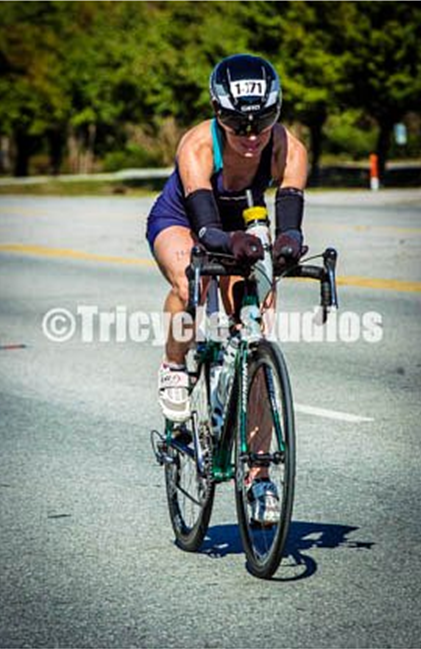
I also realized I’m not alone. Earlier this year, many of you shared with me that you want to learn more about biking – the basics, how to get faster on the bike, how to purchase a bike and what bike components to invest in and how cycling can complement/enhance your running performance.
Well, clearly, we all know I’m not the cycling expert, so I’ve invited a special guest to hang out with us and answer all these questions.
I’d like you to meet my friend Jeff Peck. Jeff is the co-owner of CogNation Cycling – a family-owned company that makes and sells carbon bike technology that won’t completely break the bank.
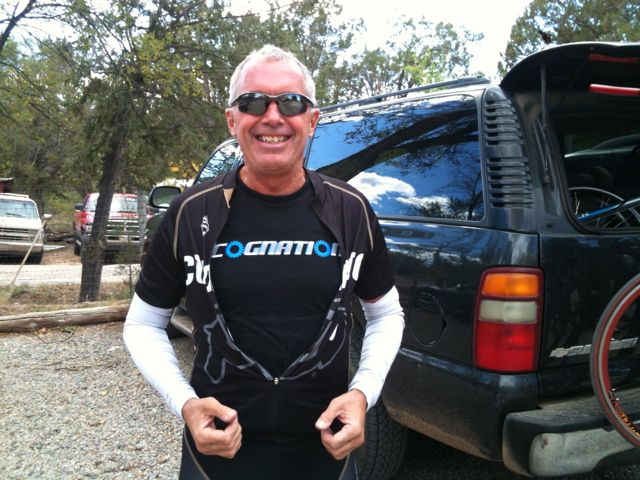
You might recall me mentioning Jeff and CogNation Cycling earlier this fall, as I rode Jeff’s carbon race wheels during Beach2Battleship. Jeff competed in his first triathlon in 1988 and has since completed more than 130 multisport races worldwide. This includes 12 half Ironman races and 6 full Ironman races. Jeff credits the variety you get with cross training for 3 different disciplines, the healthy lifestyle that comes with it and the great people you meet along the way for keeping him going.
I recently had the chance to sit down with Jeff and quiz him on all our burning cycling questions. See what he had to say:
rUnladylike: What are the best ways to become faster and more efficient on the bike?
Jeff: There are a many ways to become faster and more efficient on the bike. One of the most obvious is training. A strong engine is your base for everything else. No amount of money or equipment can replace a solid training program. Get in those miles but make them quality miles. In the off-season, a weight program and cross training are important for developing strength that we don’t have time to work on during the season. Having a coach or trainer to help set up a program is critical to making improvements. I went to a cross training gym 2 to 3 times a week during the past 2 off-seasons. This was a good way to get proper technique on weight lifting and engaging your entire body in strength training. Then, during the pre-season, start to focus on your base building miles that will lead up to your specific race goals.
The next step to becoming more efficient is to have a professional fit on your bike. I see too many athletes training and at races that are wasting so much energy and risking injury due to an improper bike fit. It doesn’t matter what kind of bike you’re riding; if you are not properly fit on it, you will not perform efficiently. When you get fit by a knowledgeable and experienced professional, make sure you discuss your riding style and goals with the person doing the fitting. You may not need to be fit like a pro going for Kona. As you grow to become a stronger rider or change bikes, recheck your bike fit. Most shops have a fit specialist and there are a few independent ones out there too.
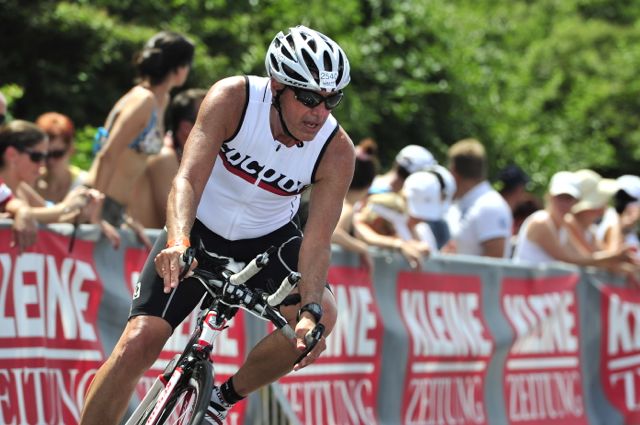
rUnladylike: Once you have your engine tuned up and your bike fitted, what can you do to your bike to improve efficiency and aerodynamics?
Jeff: There are many choices on the market for upgrades to make your bike more aerodynamic.
Once you’ve made the investment in your bike, there are a couple of basic areas to look at improving aero performance and efficiency. On my list would be the basics of clip-in shoes, clip-on aero bars if you are riding a road bike, (which allows you to keep your bike available for road rides), and a lightweight set of aero wheels.
Get the pedals, get the bars, and then look at wheels. Most experts will tell you that a set of lightweight aero wheels will do more to increase your efficiency and aerodynamics than any other choice.
Here is what a good set of aero wheels can do for you:
- Shave seconds and minutes off your race times.
- Decrease your power output to maintain the same speeds you log in training or bring your average speed up when you increase your power output to your training levels.
- Give you fresher legs for the run.
- Look cool! *wink*

A couple of other areas for improving your aerodynamics are aero helmets, rear mounted bottle cages and moving to full aero bar set up. These items require some learning curve to get the most out of them. One of the nice things about most aero upgrades is that they can move to your next bike when the time comes.
rUnladylike: I was incredibly overwhelmed when I first started learning about race wheels. I knew they were really important but had NO idea where to start. Rim depths, materials, shapes, prices … how do you choose?
Jeff: It is confusing. What is best for each person varies on many factors. Let’s break this down and look at each one of these areas.
Rim depth – This choice depends on a few key factors. What type of racing and terrain will you do the most? Are you a petite 100-pound woman or are you going for the Clydesdale crown? Rim depth affects handling and stability in different conditions. The most talked about are crosswinds. The deeper the rim, the more there is to catch the crosswinds. The petite rider can easily be blown around on narrow rims while it will take a pretty good gust to move the larger riders out of a straight line.
Never go too deep when it comes to depth. This limits the conditions you will feel safe riding in. A 60mm set of carbon rims (404 size) are what you see most at races competing by age group.
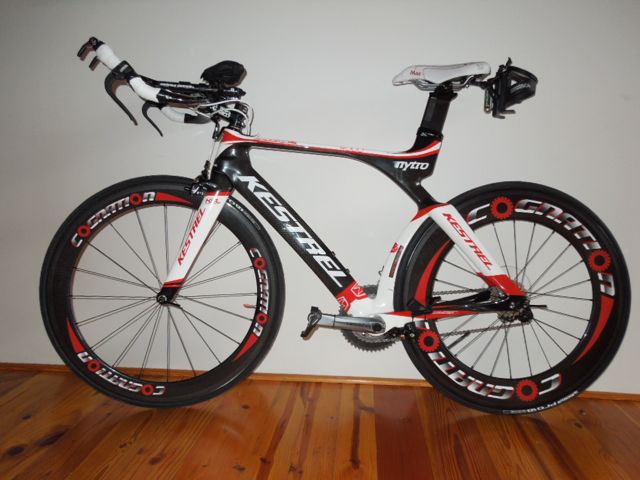
You will see a combination of a deeper rear wheel for more aerodynamics and straight line tracking with a narrower (60mm) front wheel for stability in handling. If you are a lighter rider and/or want to use the wheels in group rides, you should look at 50mm deep rims. Most of the aero wheel sets out there will be lighter than the set that come on your bike and the aero advantages will give you the output and speed benefits I described earlier.
One of the subtitle benefits I find with aero wheels is how the front wheel tracks straighter. With a narrow or flat rim, I noticed how I was always making very slight adjustments to keep the bike going straight. Put on a set of deeper rim wheels and the bike tracks in a much straighter line. I can only believe this will save time and energy over the course of any ride!
Materials aero wheels are made from – You will see all types of materials mentioned in articles and ads for aero wheels. Full carbon rims are the most common, but there are also hybrids, which have aluminum rims and a carbon fairing glued on to create the aero effect. These tend to be the least expensive and heavier choices, while full carbon sets will be lighter and start around $1,100+.
Shape of the aero rim and spokes – While almost all aero wheels come with flat aero spokes, the shape of the rims do vary. The classic is the V-shape with the narrow edge on the inside. Another development is the fulcrum shape, which is more of an oval. On all of these rims you will find flat surfaces and now dimples. While a lot of the tech talk behind the latest developments in oval shape and surface technology are very compelling (along with much higher prices), a good portion of advantages of this design don’t come into effect until you are reaching and maintaining a higher speed, sometimes above 24 to 25 mph. So if you are ready to take the Kona bike course in around 4 hours, those might be for you. I find most of us are looking for the aero advantage at our age group paces – be that 17 or 22 mph averages. Those of us who fall into that category will find an aero advantage in the classic V shapes without breaking the bank.
How do you decide which set of wheels are best for you? Look at your goals, be realistic about your abilities, look at how and where you will use the wheels, look at your budget and finally, ask your friends and even random athletes at races about their experiences. There is a set of wheels out there for you.
rUnladylike: How did you get the idea to start CogNation Cycling?
Jeff: My two sons and I started CogNation Cycling with the intention of offering carbon bike technology at prices that were more affordable for the average person. As athletes ourselves, we knew people wanted access to full carbon aero wheels, just as we did, without breaking the bank. So we did our research and put together a portfolio of high quality, customizable wheels at some of the best prices on the market. Our motto – “Become a Member of the Carbon Race” – evolved out of our goal and our ability to make carbon technology more accessible to more athletes.
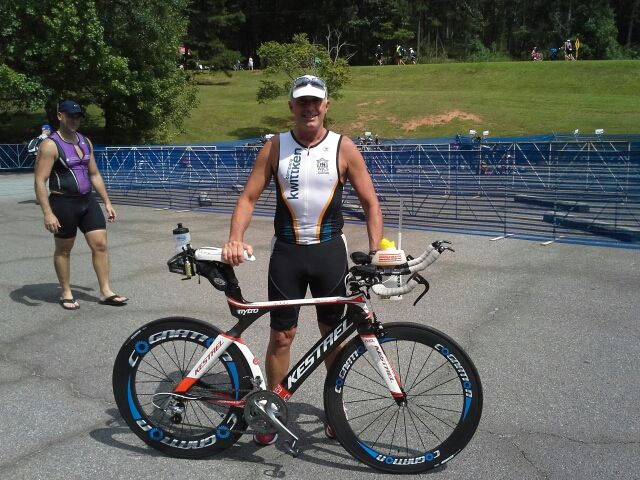
If you have more questions for Jeff or want to learn more about race wheels, here’s where you can find him:
Web site: http://www.cognationcycling.com/
Twitter: @JPEck74 and @Cog_Nation
Facebook: https://www.facebook.com/CogNationCycling
Email: jeff@cognationcycling.com
Do you have any additional questions for Jeff about how to get faster on the bike? Do you have race wheels? If so, which ones do you have and what do you think about them? Are there any other tips you would share with others on how to get faster on the bike?



Comments
Very informative stuff! I just got into road cycling and will probably start doing tris in the near future on my road bike. Getting a tri bike will probably happen a few years down the line.
I am so timid on the bike and want to commit to get quicker. This is really helpful!
Great post! I got professionally fitted and it was well worth it! I’d recommend going to a professional and paying, not just using the bike shop guy to fit you. Cycling is also my weakness- but I actually like it more than swimming which is a strength!
These are great tips!! Cycling is my strength but I can always get faster! 🙂 I want to get a pair of race wheels but they are expensive as you know! Maybe when I win the lottery!